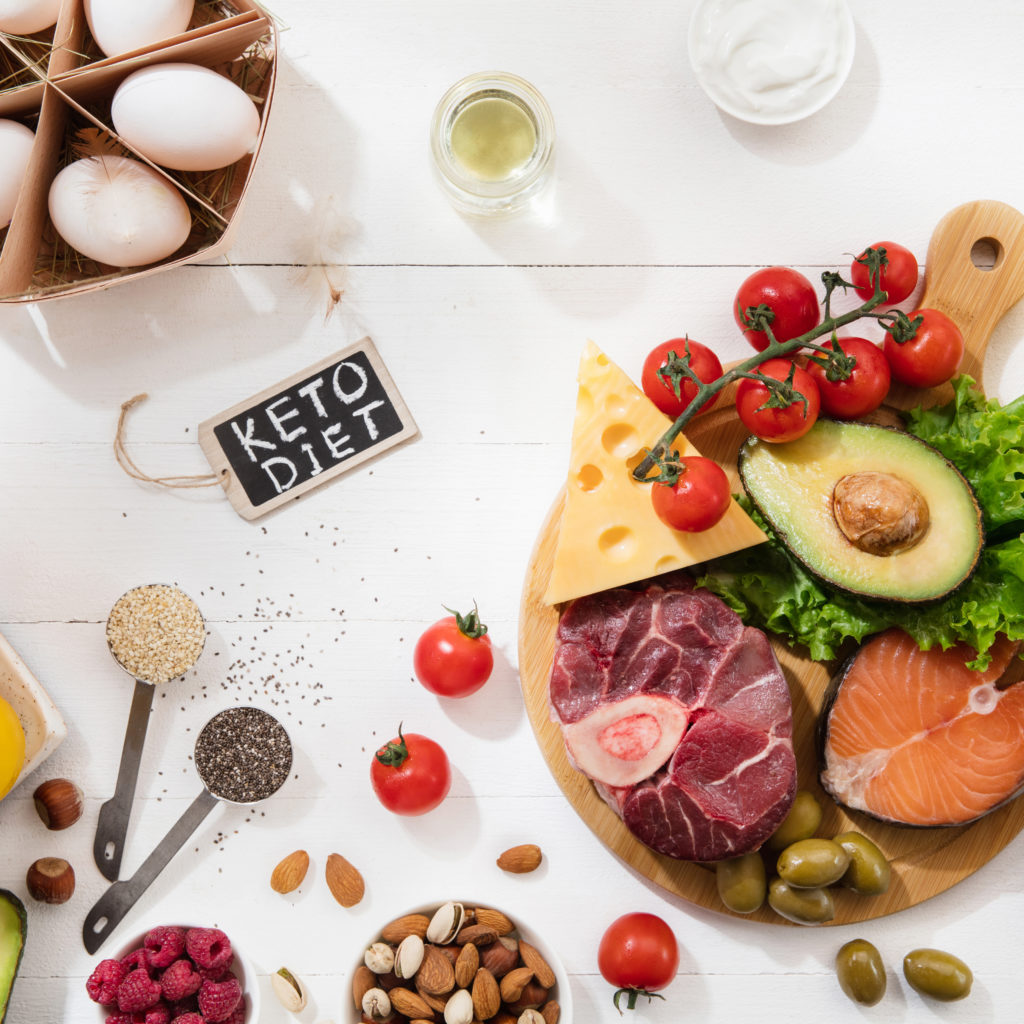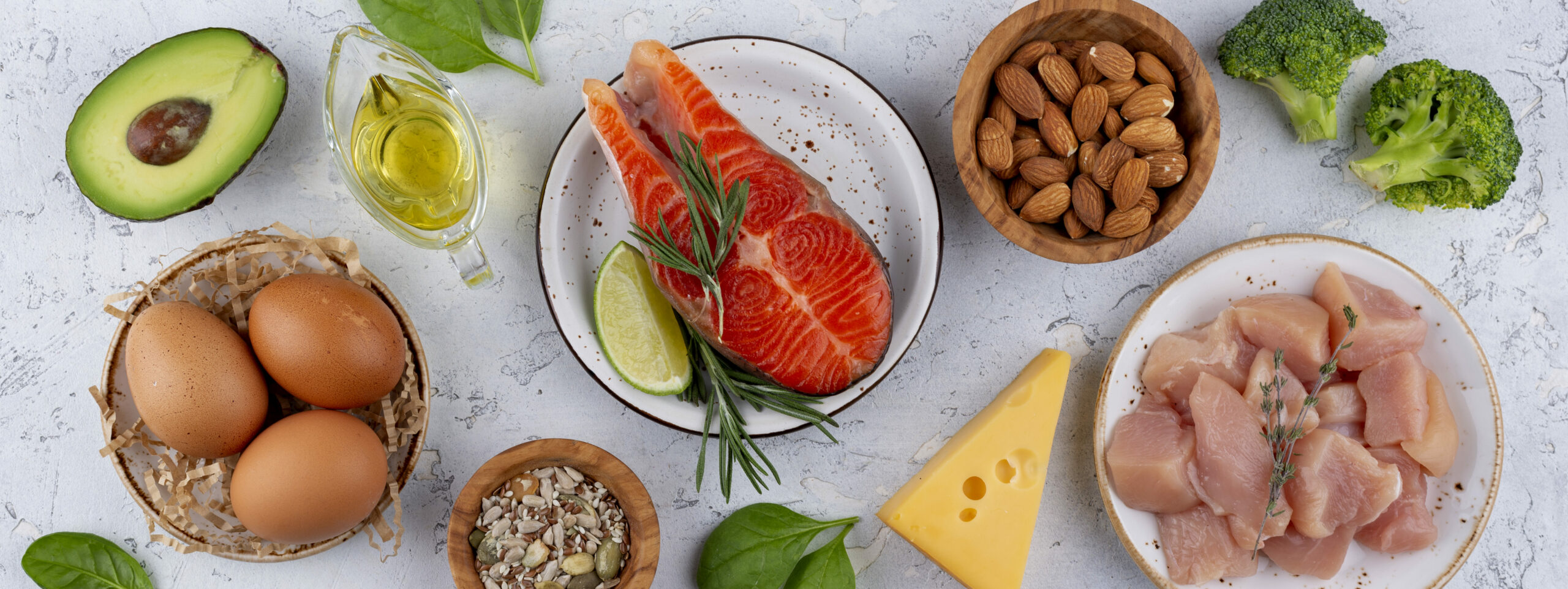
Welcome the Fitilly fans & health enthusiasts to our exploration of the Keto diet. Today, we delve into this popular diet’s essentials, focusing on the ideal foods for a Keto lifestyle.
We’ll investigate the diet’s principles, its numerous benefits, essential foods, tips for success, and crafting balanced Keto meals.
What is the Keto Diet?
The Keto diet, characterized by high fat, moderate protein, and low carbohydrate intake, aims to reconfigure your body’s metabolism into a state of ketosis. In ketosis, your body utilizes fat as its primary energy source instead of carbohydrates.
This metabolic transition offers a range of health benefits, including substantial weight loss, enhanced blood sugar control, improved mental clarity, and boosted energy levels. Its popularity stems from these health benefits and the diet’s enjoyable and varied food options.
Keto Diet Benefits: A Closer Look
Adopting the Keto diet can lead to significant health improvements:
Weight Management: It is particularly effective for weight loss and maintaining a healthy weight.
Blood Sugar Control: Ideal for those looking to stabilize their blood sugar levels.
Heart Health: Potential improvements in cholesterol and blood pressure levels.
Neurological Advantages: Emerging research suggests benefits for neurological health, though more studies are needed.
Remember, consultation with healthcare professionals is crucial before starting a Keto diet.
Foods to Eat on Keto

The Keto diet allows for a rich variety of foods:
Fatty Fish: Salmon and mackerel, rich in omega-3s, support heart and brain health.
Meats: Opt for fattier cuts of chicken, beef, and pork for better ketosis maintenance.
Eggs: High in protein and fats, they’re perfect for any meal.
Full-fat Dairy: Cheese, butter, and cream add flavour and fats needed for ketosis.
Nuts and Seeds: Almonds, walnuts, flaxseeds, and chia seeds are excellent for snacking.
Low-Carb Vegetables: Choose leafy greens, peppers, and asparagus for their low-carb content and high nutritional value.
Berries: In moderation, berries like strawberries and blueberries can be part of a Keto diet.
Foods to Avoid on the Keto Diet
The Keto diet requires avoiding certain foods to maintain ketosis:
Grains and Starches: Avoid bread, pasta, rice, cereals, and products made from wheat, corn, and other grains.
High-Sugar Fruits: Limit fruits like apples, bananas, oranges, and grapes, as well as fruit juices, dried fruits, and smoothies.
Root Vegetables: Steer clear of potatoes, sweet potatoes, carrots, and other starchy root vegetables.
Legumes: Beans, lentils, and chickpeas are high in carbs and not ideal for keto.
Sugary Foods and Sweeteners: Exclude sugar, honey, maple syrup, and foods with added sugars like candy and desserts.
Low-Fat Dairy Products: Choose full-fat over low-fat or fat-free dairy products, which often have added sugars.
Certain Alcoholic Beverages: Beer, sweet wines, and cocktails are high in carbs; opt for spirits with zero-carb mixers instead.
Processed Foods: Many processed items, including “diet” or “low-fat” products, contain high carbs and unhealthy additives.
Condiments and Sauces: Avoid ketchup, barbecue sauce, and other sweet condiments; use spices and herbs for flavouring.
Artificial Trans Fats: Found in some margarine and processed foods, these are unhealthy and non-keto.
Mastering Keto: Practical Tips for Success

Meal Planning: Plan your meals weekly and keep Keto-friendly ingredients at hand.
Carb Tracking: Use apps or journals to track your carb intake.
Hydration: Drink plenty of water to stay hydrated and support metabolic processes.
Electrolyte Balance: Ensure sufficient intake of salts to prevent electrolyte imbalances.
Listen to Your Body: Adjust your diet according to your body’s feedback and energy levels.
Creating Balanced Keto Meals
Creating balanced Keto meals involves incorporating proteins, healthy fats, and low-carb vegetables. For a dinner option, you could enjoy grilled chicken paired with a side of avocado and a kale salad.
At breakfast, consider scrambled eggs with spinach and feta cheese. The key is to experiment with various combinations to ensure your meals are both exciting and nutritious.
This approach helps maintain the low-carb, high-fat balance essential for a successful and sustainable Keto diet.
Addressing Common Keto Challenges

Embarking on a Keto diet, while effective for weight loss, may come with challenges like the ‘keto flu,’ which involves symptoms like fatigue and headaches in the initial stages.
Cravings for carbohydrates can be intense, and individuals might face plateaus in weight loss. To enhance your Keto journey, it’s important to address these challenges.
Managing the keto flu can involve increasing electrolyte intake and gradually reducing carb intake. Cravings can be handled by choosing satisfying keto-friendly alternatives, and weight loss plateaus may require adjustments in diet or increased physical activity.
Understanding and addressing these challenges will contribute to a more successful and enjoyable experience on the ketogenic diet.
Check out this video below for more details on what you can and cannot eat if you’re on a keto diet.
Conclusion
The Keto diet presents a unique approach to nutrition, emphasizing fats and proteins while limiting carbohydrates. It requires thoughtful food choices and a commitment to understanding your body’s needs.
With proper research and healthcare consultation, the Keto diet can be a transformative journey towards better health. For more insights into the Keto diet and holistic wellness, continue exploring our website, www.Fitilly.com



